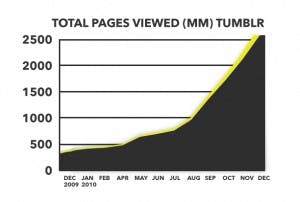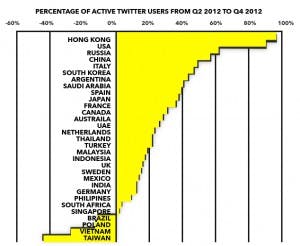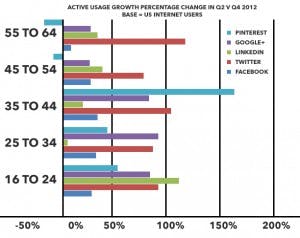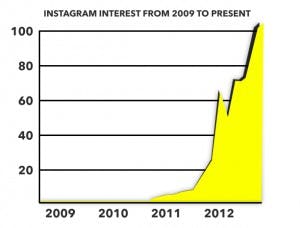
Do your parents use Facebook? Your grandparents? Your crazy aunt with all the cats? If you answered yes then you've already seen the trend.
Do your parents use Facebook? How about your grandparents? How about your crazy aunt with all the cats? If you've answered yes to any or all of these questions then you've seen the trend. As this trend continues it can only lead to one place for Facebook—less user’s to among the critical younger demographics that count most. More and more of the youngest generation is flocking to other social sites throughout the web—Tumblr for instance, check.

Up to well over 2 billion page views in Dec. 2012 (and approaching 3 billion currently most would guess) from just under 335 million- all in one year.

Twitter? Also check. Twitter has seen astronomical growth over the last year—especially in the world’s two largest markets, the US and China.
It’s worth mentioning that for years, as with Facebook, Twitter had seen stagnation in its' growth usage in the US, with growth centered on the emerging internet markets such as Brazil, Indonesia, and India. However, 2012 has reversed this trend for Twitter and seen the US grow to second place in usage worldwide (usage = daily number of active users) usage behind Hong Kong, growing a staggering 94% to 33.8 million active users and 59 million account holders in Q4 2012. In ThoughtLab’s own Twitter analysis we have identified three key reasons behind this return to growth for Twitter:
- iOS and Android integration into the native functionalities of their operating systems.
- A wider spread of growth across all demographics. Even, the oldest generations are now using Twitter to discover content, read news, and interact.
- Media adoption that has spread to the mainstream allowing users to get the most current news before it hits traditional airways and media outlets- therefore driving the rise of twit addiction (how many times a day do you check your Twitter feed anyways?)
This is even more important when you look at Twitter’s growth in the crucial younger demographics. Which as you can see from the chart below shows rapid growth from those 16-24 and from those 25-34 on and rather anemic growth for those critical demos on Facebook.

It is also worth noting that Facebook’s active usage percentage is shrinking not only in those key demographics but also across the board. What is perhaps most surprising, is that I’m sure Facebook is well aware of this. The Facebook application programming interface (API) is chock full of analytics that provide metrics on age, demographics, usages, page views, bounce rates etc. and they have seemingly not done anything to try to address this problem and draw young users back into the site (to be fair this is an extremely difficult thing to do as most people’s interest in anything online is fickle at best, but with the wealth of data we have all provided to Facebook at one time or another doesn't it seem like they could be doing more?). Even the recent hockey stick usage growth at Instagram, a wholly owned subsidiary of Facebook, should provide insight that young user demographics are using Facebook less and less.

So what does all of this mean to those of us concerned with interactive marketing, social trends and the efficacy of social media in our marketing campaigns? Quite a lot actually, but we can’t give away all our secrets in one blog post. In general what interactive marketers should pay attention to is the CPL, or cost per lead. As usage goes down CPL will go up. Don’t be fooled by the latest, greatest social media-marketing tool. Do your homework (as some products will actually have an effective CPL on Facebook) but understand that for any highly successful interactive marketing campaign what is required in a multi-pronged approach that is based in solid fundamentals, analysis, technology (read: AI), diligence and most importantly execution.
You could (warning shameless plug), of course, always just take the easier path and reach out to the resident Utah web experts here at ThoughtLab to strategize, analyze, develop and deploy your own comprehensive multi-pronged interactive marketing approach—complete with actual results (just saying). Happy hunting.

